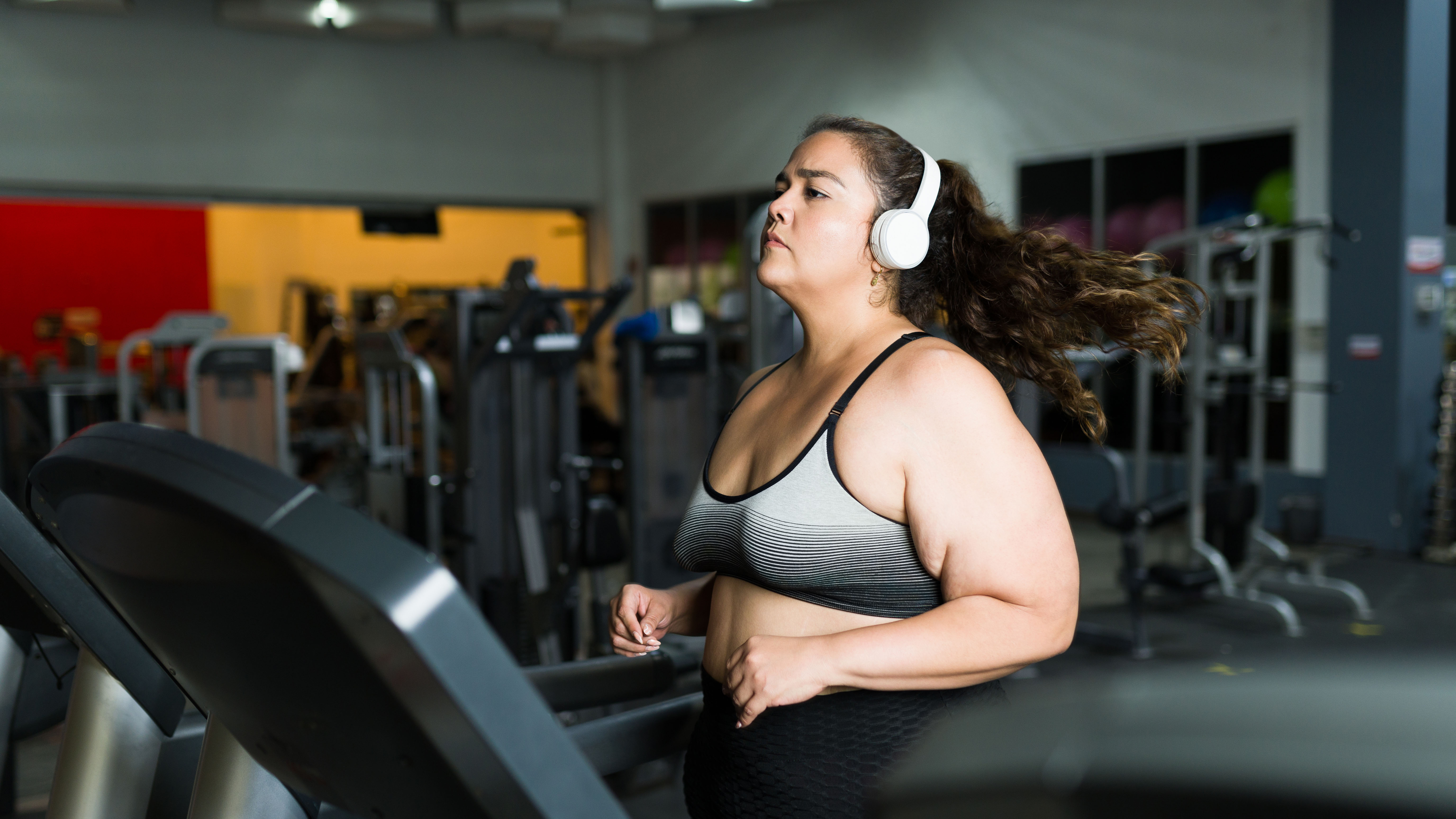Running outside vs treadmill: Is there actually any difference?
Here's what the latest research says about the 'running outside vs treadmill' debate

Running outside vs treadmill – which is actually better for you? Running can be an enjoyable and effective form of cardio exercise, but many runners fall into two camps: those who love exercising outdoors and those who prefer the steady state of the best treadmills. But is there really much difference between them?
To find out whether running on a treadmill can truly match the benefits of an outdoor jog, we looked at the latest research and spoke to a team of qualified physiotherapists to understand how speed, calorie expenditure, injury risk, and motivation differ depending on what version of this cardiovascular exercise we choose. And why, depending on what you’re training for, running outside might have more performance benefits than exercising on the treadmill.
Stride length and injury risk
Treadmills often feature tech add-ons such as incline and speed controls that can help us vary our pace and our energy expenditure. However, what we’re running on also impacts our stride length, which is important for improving running performance, and can change if we swap our outdoor movement for some indoor action.
“There are mixed thoughts in terms of whether the running patterns alter if you’re on a treadmill,” says Physiotherapist and Founder of Physio Fast Online, Katie Knapton.
“Some research says that people tend to take shorter strides and others say that it makes no difference. Stride length on treadmills tends to be uniform because of the predictable nature of the surface, and while it’s likely to vary from individual to individual there may be a tendency to take smaller strides on a treadmill than you would running outdoors.”

Katie Knaption is the founder of Physio Fast Online. She is a chartered physiotherapist with over 30 years of musculoskeletal experience within the NHS and latterly in her own private practice in West Sussex.
Motivation and mood-boosting benefits
“Treadmills can be boring if you’re running for a long period,” says Knapton. “Not only that but there is a lack of variability of surface and you're not able on most treadmills to do declines, which means you’ll miss out on bone strengthening benefits [from downhill running].”
There's growing evidence that exercising outdoors can improve our mental health. A review published in Environmental Science and Technology found that there's growing evidence to support the mood-boosting benefits of outdoor workouts, although there's a need for better quality studies. While treadmills often come with some form of inbuilt entertainment, in the long run, they’re no match for the health benefits of spending time in the fresh air.
Get the world’s most fascinating discoveries delivered straight to your inbox.

Running outside is also free, so you don't have to pay for a gym membership or expensive treadmill machine.
Injury risk
Running is a high-impact sport that puts pressure on your joints; while it's tempting to think that the cushioned belt of a running machine might protect you from some of that impact, research shows that this isn't the case. A 2008 study published in the Medicine and Science in Sports and Exercise journal found that muscle activity and load placed on joints is largely comparable across running outdoors and on a treadmill.
However, as outlined above, some research also suggests that running on a treadmill encourages runners to adopt a shorter stride length. And a meta-analysis published in the Journal of Sports Health found that a reduced stride length reduces the risk of running injury, so this could be an underlying safety benefit to treadmill sessions.

So are treadmills safer? Not exactly. The Consumer Product Safety Commission reported that treadmills were responsible for 22,500 hospital admissions in 2019. It's very easy to hurt yourself on moving machinery if you don't follow the safety instructions closely.
Running outdoors brings with it the possibility of uneven surfaces and hidden obstacles. Basically, both methods of running (outdoors or on a treadmill) have their own dangers and benefits.
Calorie expenditure
Studies – such as this one published in JAMA – show that treadmills will burn through more calories than other gym machines. But according to the previously mentioned study published in Medicine and Science in Sports and Exercise, energy expenditure between outdoor running and treadmill running is roughly the same.
That said, it's possible that outdoor environmental factors could significantly influence calorie burn. Tackling inclines, combatting wind resistance and speeding up to jog around obstacles could all (possibly) make your energy expenditure a bit higher. Running in the rain could also burn more calories, as your body will have to work harder to combat heat loss in the damp weather.

Muscle strength
Looking to build muscles? While weight training should be your first point of call if you’re wanting to improve your body composition, running can help to build muscle tone in our legs.
“Treadmills offer little versatility as users can’t run downhill or turn corners,” says Bickerstaff. “This means they won’t offer elevation changes required to strengthen specific muscles, which can put you at a disadvantage when taking part in events such as marathons.”
If you’re particularly focused on building muscle for races, then running outside will deliver better results.
“If you want to improve your muscle tone and train for a race, I would recommend running on the road to condition your muscles and joints to different running terrains,” says Urban Body's lead Physiotherapist, Phil Evans.

Phil Evans is the lead physiotherapist at Urban Body, UK. He qualified in 2008 with an MSc in Physiotherapy from University of Birmingham. He has over a decade’s worth of experience treating a variety of injuries and working with professional sports bodies.
“Road running is generally harder on your body as you need to propel yourself forward, which requires more energy and muscle activation. There is, however, an increased risk of injury due to the impact of the hard and uneven surfaces. A middle ground between road running and treadmill running is using a non-motorized curved treadmill. The curve runners will reduce the impact compared to road running, but will still activate your muscles as you have to drive the belt backward, using more energy to keep the momentum going.”
Stacey Carter is a Freelance Health Writer who has written print features and digital content for titles such as Woman & Home, Natural Health, Women’s Health, Get The Gloss, and Stylist. You'll find her covering a wide variety of health-based topics, talking to leading figures in the fitness industry, and investigating the latest trends in wellness. When she’s not at her laptop, weekend hikes, testing out new recipes in the kitchen and LISS-style workouts are her favourite ways to switch off.



